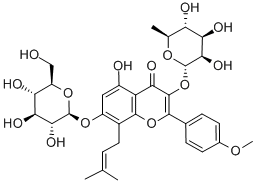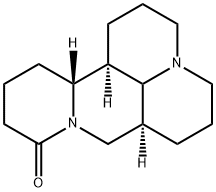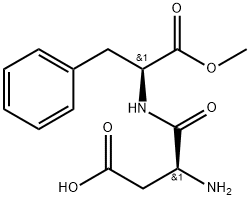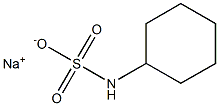Stevioside
Synonym(s):(4α)-13-[(2-O-β-D -Glucopyranosyl-β-D -glucopyranosyl)oxy]kaur-16-en-18-oic acid β-D -glucopyranosyl ester;(4α-13-[(2-O-β-D-Glucopyranosyl-β-D-glucopyranosyl)oxy]kaur-16-en-18-oic acid β-D-glucopyranosyl ester;Steviosin
- CAS NO.:57817-89-7
- Empirical Formula: C38H60O18
- Molecular Weight: 804.88
- MDL number: MFCD00079561
- EINECS: 260-975-5
- SAFETY DATA SHEET (SDS)
- Update Date: 2025-12-17 11:34:44
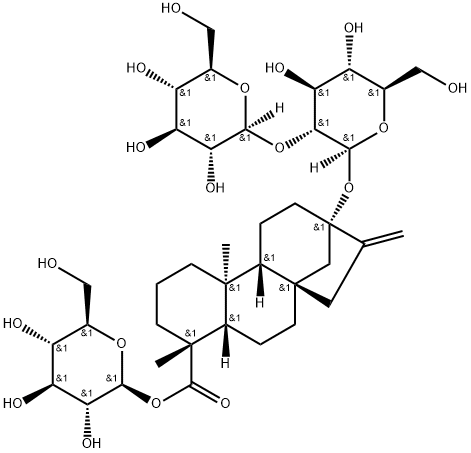
What is Stevioside?
Description
Stevioside is a steviol?glycoside found in the leaves of Stevia rebaudiana, a member of the sunflower family that is native to Paraguay and Brazil. French chemists M. Bridel and R. Lavielle discovered stevioside in 1931 and named it after the plant’s genus. In 1980, Tomoya Ogawa and colleagues at the Institute of Physical and Chemical Research (now Riken) in Wakō, Japan reported the total synthesis of stevioside.
For centuries, South Americans have used the dried leaves of S. rebaudiana as a sweetener. More recently, stevia products that contain stevioside and its glycoside cousin rebaudioside?were “discovered” in the rest of the world as a non-nutritive replacement for common sugar (sucrose). One gram of stevioside is estimated to be as sweet as ≈300 g sucrose.
Chemical properties
White powder
Occurrence
Stevioside is a naturally occurring sweetener (~200 times sweeter than sucrose) extracted from a South American plant, Stevia rebaudiana Bertoni. The dried leaves, the water extract of leaves, and the refined chemical ingredients, eg, and Rebaudioside A (~300 times sweeter than sucrose), can all be used as sweetening agents. These are collectively referred to as stevia. Discovered in Paraguay and Brazil, the plant was identified in the early 1970s as a plant of high economical value and transported to Japan for cultivation, where the commercialization of stevia leaves extract as a natural sweetener became a success. Today Stevia plant is cultivated primarily in China.
History
Because no food additive petition has been presented to the FDA, stevioside and related materials cannot be used in the United States as food ingredients. An import alert against stevia was issued by the FDA in 1991. In 1995, however, the FDA revised this import alert to allow the importation and use of stevia as a dietary supplement, but not as a sweetener or an ingredient for foods. In 2004, JECFA (Joint Expert Committee of Food Additives) issued a preliminary ADI (Allowed Daily Intake) of 2-mg/kg body weight (based on steviol) for stevia extract. This action may impact favorably on worldwide regulatory approval. As consumer’s demand on naturally sweetened products increases, interest in Stevia, and naturally occurring potent sweeteners in general, is expected to grow. A comprehensive review of stevia is available [Kinghorn, 2002].
The Uses of Stevioside
Stevioside is a glycoside from the stevia plant. Stevioside is a natural sweetening agent with sweetness about 250 times that of sugar with negligible effect on blood glucose. Stevioside, much like ot her steviol glycoside is known for its application in treatment of many diseases like diabetes and high blood pressure. It is also used as a food additive and in dietary supplements.
The Uses of Stevioside
Stevioside is a natural, calorie-free sweetener obtained from the leaves of the plant stevia rebaudiana bertoni. it is a steviol glycoside in which steviol’s carboxyl and hydroxyl hydrogen atom is replaced with glu- cose; it has two linked glucose molecules at the hydroxyl site. it is the major steviol glycoside found in the stevia plant and is 250–300 times sweeter than sugar. it is heat and ph stable. it has been associ- ated with a bitter and licorice taste. see steviol glycoside.
The Uses of Stevioside
Stevioside is a glycoside from the stevia plant. Stevioside is a natural sweetening agent with sweetness about 250 times that of sugar with negligible effect on blood glucose. Stevioside, much like other steviol glycoside is known for its application in treatment of many diseases like diabetes and high blood pressure. It is also used as a food additive.
What are the applications of Application
Stevioside is a reagent that exhibits transepithelial p-aminohippurate transport
Definition
ChEBI: Stevioside is a diterpene glycoside that is rubusoside in which the hydroxy group at position 2 of the allylic beta-D-glucoside has been converted to the corresponding beta-D-glucoside. It is a natural herbal sweetener that is 250-300 times sweeter than sucrose (though with a bitter aftertaste), extracted from the Stevia rebaudiana plant native to South America. It has a role as a sweetening agent, an antioxidant, an antineoplastic agent, a hypoglycemic agent, an anti-inflammatory agent and a plant metabolite. It is a diterpene glycoside, an ent-kaurane diterpenoid, a beta-D-glucoside, a tetracyclic diterpenoid and a bridged compound. It is functionally related to a steviol and a rubusoside.
Benefits
Stevioside may offer therapeutic benefits, as they have anti-hyperglycemic, anti-hypertensive, anti-inflammatory, anti-tumor, anti-diarrheal, diuretic, and immunomodulatory actions.
Side Effects
When taken by mouth: Certain chemicals in stevia, including stevioside and rebaudioside A, are likely safe when used as a food sweetener. Side effects might include bloating, nausea, dizziness, and numbness.
Biochem/physiol Actions
Stevioside reportedly has genotoxic effects in cultured mammalian cells.
Storage
+4°C
Properties of Stevioside
| Melting point: | 198°C |
| Boiling point: | 963.3±65.0 °C(Predicted) |
| alpha | D25 -39.3° (c = 5.7 in H2O) |
| Density | 1.53±0.1 g/cm3(Predicted) |
| refractive index | -39.3 ° (C=6, H2O) |
| FEMA | 4728 | GLUCOSYL STEVIOL GLYCOSIDES |
| storage temp. | Sealed in dry,2-8°C |
| solubility | DMSO: soluble25mg/mL, clear |
| form | powder |
| appearance | white powder |
| pka | 12.51±0.70(Predicted) |
| color | white |
| Merck | 14,8810 |
| CAS DataBase Reference | 57817-89-7(CAS DataBase Reference) |
Safety information for Stevioside
Computed Descriptors for Stevioside
| InChIKey | ZBXJPXVJLBZBLI-IJGGXEOMSA-N |
New Products
Indole Methyl Resin tert-butyl 9-methoxy-3-azaspiro[5.5]undecane-3-carboxylate Boc-His(Boc)-OH 2-CTC Resin 4-Chloro-7-tosy1-7Hpyrrolo[2,3-d]pyrimidine 5,7-Dibromo-1H-indole 2,5-dichloro-N-hydroxy-4,6-dimethylpyridine-3-carboximidamide 2,2-Dimethoxy-7-azaspiro[3.5]nonane hydrochloride 4-chloromethyl-5-methyl-1,3-dioxol-2-one (DMDO-Cl) R-2-BENZYLOXY PROPIONIC ACID 1,1’-CARBONYLDIIMIDAZOLE 1,1’-CARBONYLDI (1,2-4 TRIAZOLE) N-METHYL INDAZOLE-3-CARBOXYLIC ACID 4-((2-hydroxyethyl)thio)benzoic acid 1-(TERT-BUTOXYCARBONYL)-2-PYRROLIDINONE Methyl 6-methylnicotinate 3-Pyridineacrylic acid tert-Butyl carbazate TETRAHYDRO-2H-PYRAN-3-OL 2-((4-morpholinophenylamino) (methylthio) methylene) malononitrile 3-(4-morpholinophenylamino)-5-amino-1H-pyrazole-4-carbonitrile 2,4-dihydroxybenzaldehyde 1,3-Diethyl-1,3-Diphenylurea Methyl 2-methylquinoline-6-carboxylateRelated products of tetrahydrofuran
You may like
-
 57817-89-7 Stevioside RS 98.10View Details
57817-89-7 Stevioside RS 98.10View Details
57817-89-7 -
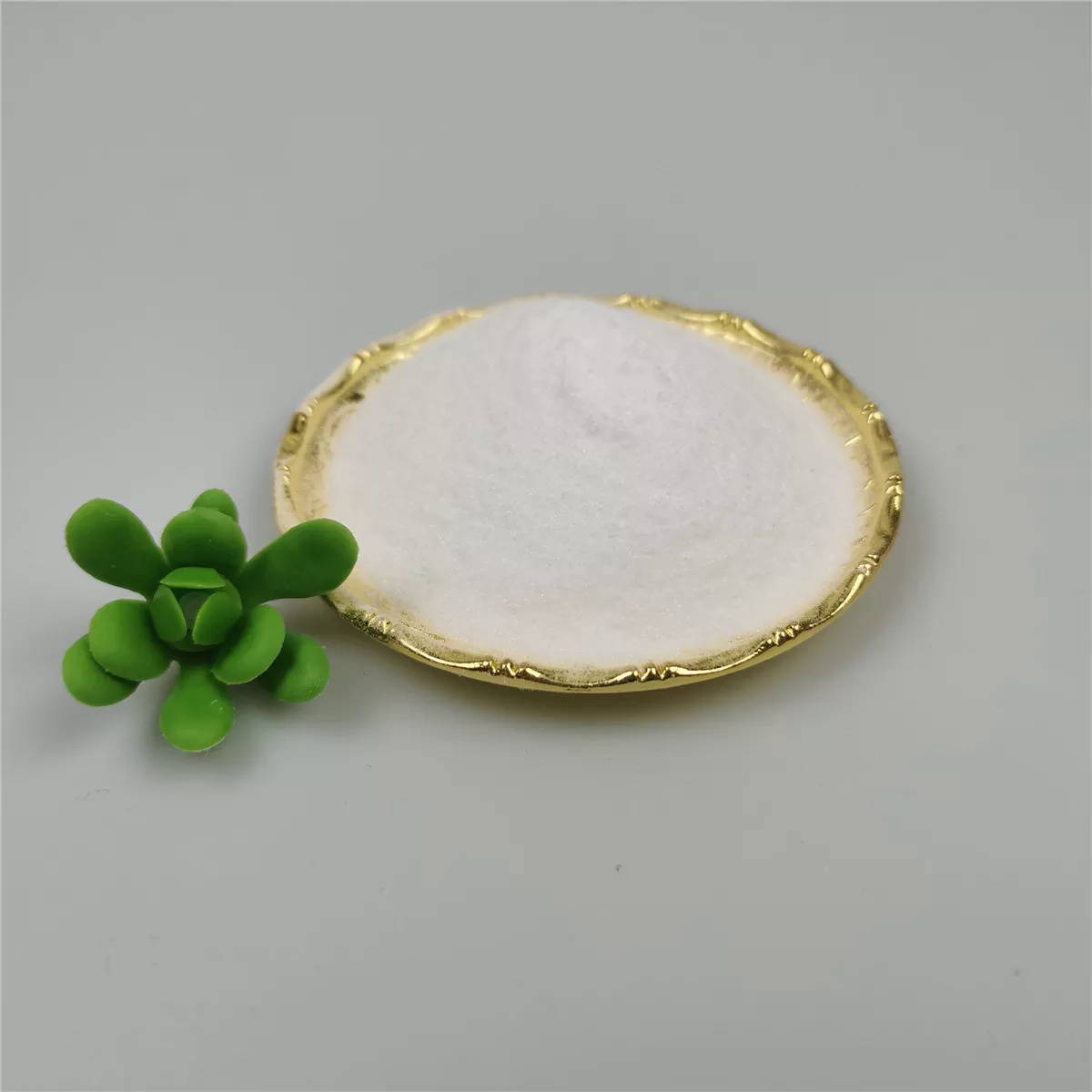 57817-89-7 99%View Details
57817-89-7 99%View Details
57817-89-7 -
 Stevioside 99%View Details
Stevioside 99%View Details
57817-89-7 -
 Stevioside CAS 57817-89-7View Details
Stevioside CAS 57817-89-7View Details
57817-89-7 -
 Stevioside, hydrate CAS 57817-89-7View Details
Stevioside, hydrate CAS 57817-89-7View Details
57817-89-7 -
 Stevioside, hydrate, 98% CAS 57817-89-7View Details
Stevioside, hydrate, 98% CAS 57817-89-7View Details
57817-89-7 -
 Stevioside 95% (HPLC) CAS 57817-89-7View Details
Stevioside 95% (HPLC) CAS 57817-89-7View Details
57817-89-7 -
 Stevioside CAS 57817-89-7View Details
Stevioside CAS 57817-89-7View Details
57817-89-7


